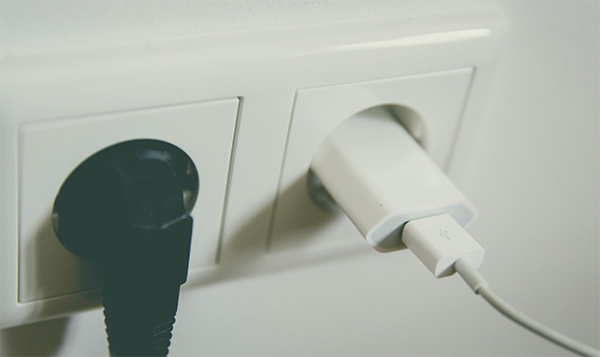Today we live in an era of paradox where despite all technological innovations that guarantee greater efficiency, we continue to face a constantly growing demand for energy raw materials (excluding the lockdown period).
Understanding what drives global demand for energy commodities is complex. If we only analyze what happens in the oil market, even in this case, the factors are many.
A first reason lies in the overall growth of the world population. In reality, the population grows mainly in countries with a development deficit, where the percentage of young people is high. In some of these countries, from India to Nigeria, economic well-being is growing (albeit with considerable and dramatic inequalities) and the percentage of middle-class population and with them the demand for goods typical of the wealthy classes of Western economies, from paper hygienic to the refrigerator and washing machine, increase.
Another reason lies in the progressive “electrification of consumptions”, by making electric services and items that were not electric before: in developed countries, such as Europe, the so-called rebound effect is just around the corner, that is the phenomenon whereby the savings obtained with increasingly efficient and performing electrical appliances are more than offset by the increase in the use of the same or new electrical appliances. Paradoxically, greater efficiency also leads to neglecting small consumptions and adopting wrong behaviors: it is estimated that, on average, between 8% and 10% of the annual consumption of a European family is due to the standby of household appliances that are not switched off.

CLIMATE CHANGE LEADS TO DIFFERENT ENERGY CONSUMPTION BEHAVIORS
If climate change can lead to mild winters that lead to a reduction in heat requirements, on the other hand it determines hot summers even in countries with relatively cool climates, such as those of central and northern Europe, creating the need to cool the rooms: in fact, while at the end of the last century the peak of electricity consumption was recorded in the winter months, in this century the peak of consumption is recorded in the summer.
Oil is not only used to produce energy or gasoline but is also the basis of many chemicals, from plastics to fertilizers. Even today, only part of the plastic we use is partially or entirely coming from recovery paths of secondary raw materials and, despite the various regulatory measures to limit their use (read our piece on this subject), it is difficult to find materials in certain product categories alternatives to plastic.

Similarly, after a slight containment during the lockdown, food waste has started to increase again: every time we throw away food, we also throw away the resources and raw materials that were used to produce it, including water and energy, especially in the case of greenhouse cultivation which requires a high consumption of energy (other issues obviously weigh on the price of foodstuffs and the climate plays a fundamental role in this case).
Is it therefore possible to reduce the consumption of energy commodities?
Yes, it is possible, but it requires both a strong awareness of those who use these raw materials and a strong commitment to change their habits and behaviors, also not less relevant, a energy efficiency policy structural and in lace, as well as the spread and adoption of renewable energy as we have already spoken about.

Vania Statzu
Environmental Economist MEDSEA
Latest news

TransformAr Open Day in Marceddì: Marshes and Lagoons to Reimagine the Future
Natural Solutions to Adapt to Climate Change: Lagoons and Marshes. This topic was discussed during an immersive walk between the Marceddì Lagoon and the San Giovanni Marsh on Friday, July…

MEDSEA joined the Natural Heritage Interreg Euro-MED Mission in Rovinj for aligning in projects' Communication
MEDSEA stopped in Rovinj, Croatia, from June 26th to 27th, 2024, to participate in the Communication, Amplification and Policy activities of the Interreg Euro-MED Natural Heritage mission, which brings together the thematic projects…

DesirMED: Nature-Based Solutions for Climate Adaptation, Regional Comparison at the Mid-Year Assembl
The DesirMED project recently held its General Assembly online on June 19 and 20 to review the progress of activities in the first semester. This meeting saw the participation of all scientific partners and…

Waste Hunt at Sella del Diavolo to Protect our Cetaceans Friends
Last Saturday on June 15th, nearly a ton of waste was recovered both on land and at sea during the "Puliamo la Sella!" event in Cagliari. The collected items included…

Active Restoration of Posidonia oceanica: MEDSEA at the 2024 World Seagrass Conference in Naples
MEDSEA continues to lead in the active restoration of Posidonia oceanica, a crucial topic for the conservation of Mediterranean marine ecosystems. Recently, the guide "Guidelines for the Active Restoration of Posidonia oceanica"

TransformAr Open Day on July 5th 2024: Discovering Transformative Solutions for Climate Change at the Marceddì Lagoon
On July 5th, TransformAr presents itself to the public with a special Open Day. The European Horizon 2020 project, aimed at developing transformative solutions for climate change adaptation, invites curious minds and citizens…

Puliamo la Sella! 2024 dedicated to our cetacean friends, with WWF, returns to Cagliari on June 15, 2024
The coastal cleanup organized by the MEDSEA Foundation, Puliamo la Sella!, returns to Cagliari on June 15th 2024. This year's event, now in its sixth edition, will be a special…

Deep Dive: The Talk for World Oceans Day
World Oceans Day provided an opportunity to reaffirm the importance of acting now to protect one of our most precious assets: the marine and coastal ecosystem. The Coalitions of the…
First SEG Meeting of the BLUE4ALL Project: A Focus on Surveillance and Biodiversity Protection
On May 23, 2024, the inaugural SEG (Stakeholder Engagement Group) meeting for the BLUE4ALL Project was held at Casa Todde in Villasimius, with options for remote participation.

RICREA introduces itself in Lucca, working on updating the Contracts, and will also focus on the Blue Crab
River, lagoon, and water body contracts in general are an exceptional tool for sustainable and participative environmental management, essential for the protection of water resources and local biodiversity. However, there…

TransformAr: Climate Adaptation Pathways Finalized for the Fisheries and Agriculture Sector in Terralba
This week, a participatory workshop was held in Terralba as part of the TransformAr project to finalise the adaptation pathways developed with local operators, particularly in the fisheries, agriculture, and biodiversity sectors.

ARTEMIS, Partner Meeting in Marseille to Kick Off Activities
On May 15th and 16th, at the Plan Bleu headquarters in Marseille, the first in-person meeting of the ARTEMIS project was held since the kickoff in March. ARTEMIS is a project within the…

DEEP DIVE: The Alarming State of the Ocean – Inspiring Action and Searching for Solutions (Webinar)
In celebration of World Ocean Day, MEDSEA invites you to the online event "Deep Dive: The Alarming State of the Ocean", a detailed analysis of the challenges that oceans are…

Fire Monitoring Test successfully conducted in Santu Lussurgiu thanks to IoT Technologies
At the end of April, a major breakthrough in fire prevention technology was achieved in the forests of San Leonardo. Thanks to pre-fire detection sensors, an IoT (Internet of Things) technology developed and…

REST COAST, at the annual meeting in Groningen, demonstrates the effectiveness of natural restoration of aquatic systems
The standstill of the Nature Restoration Law, the European law on nature restoration, stalled in its final approval phase in the Council due to the hesitations of some Member States, has…

TransformAr makes a stop in Finland for the sixth Consortium Meeting
In mid-April, the sixth Consortium meeting of the H2020 TransformAr Project was held in Lappeenranta, recognized as the Climate Capital of Finland. This city truly exemplifies sustainability, with 100% of waste recycled and all…
- 1
- 2
- 3
- 4


